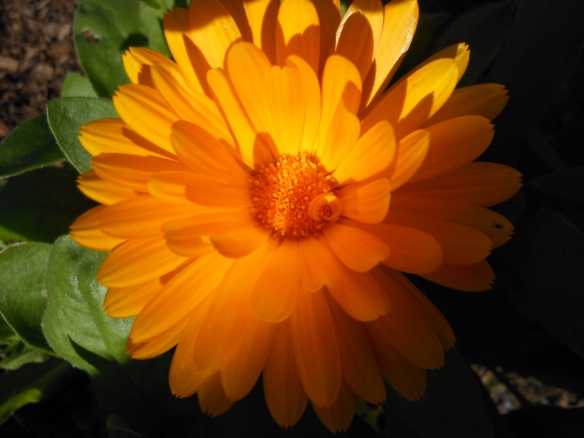This morning under a picture perfect blue sky and yellow sun I dug up my first beetroot of 2014, small, round and perfect for roasting together with my first Calendula flower to decorate this evening’s salad and not a slug in sight.
Beta vulgaris began its journey to my plate as sea beet (Beta vulgaris subspecies maritima) growing around coastlines in pre-historic times. It was offered to Apollo at Delphi.
The Romans changed the name to Beta and took a medicinal interest in the roots 
(The Greeks only ate the leaves,  not sure what part Apollo preferred to eat!)
not sure what part Apollo preferred to eat!)
From a long thin taproot not unlike the carrot, it developed, in the sixteenth century, into the common round shape we know today. It is a vegetable of many colours although red is the most widely cultivated.
Calendula officinalis is steeped in religious history. Mayans, Aztecs, Romans, Greeks and Hindus decorated alters and statues with this vibrant flower. It is also known as Mary’s Gold, traditionally used by Catholics when celebrating the Virgin Mary. It is considered a flower of Lady Luck (it is certainly a lucky flower on my plot as the slugs ignore it). The Romans coined the name Calendula as it supposedly flowers at the beginning of each month (can’t say I have noticed this).
Medicinally both Beta vulgaris and Calendula officinalis are renowned for their healing properties, but that is another story for another day. Today is a day for enjoying the blue sky and extremely warm sun.
(However if you get stung this summer by a bee or wasp rub the affected area with a freshly picked flower and watch the magic evolve).


